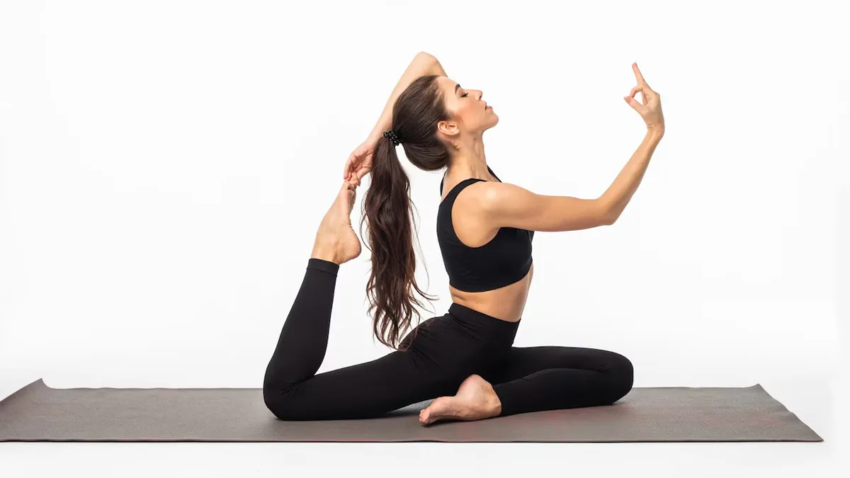
Four Ways to Improve Your Brain with Yoga
It’s not surprising it’s one of the primary principles is to lessen anxiety and calm the mind. With one-in-four individuals suffering from mental health problems at one time in their lives, yoga is now being seen as a viable strategy that will help protect and improve the mental well-being of people across the globe.
Yet, despite such claims there’s a lot of research conducted by scientists looking to discover what happens to the brain during yoga. And how can it aid us? Apart from doing yoga, you can look into therapies online like BetterHelp whenever you want.
Staying youthful requires the formation of brain connections.
In the study conducted at the University of California and published in the Journal of Alzheimer’s Disease, researchers examined the effects of exercise on the performance as well as memory tests in subjects who have moderate cognitive decline.
The study looked at 29 middle-aged and elderly individuals who had previously reported anxiety about their memory. When the University conducted an evaluation and the University of Michigan, the study group was discovered to suffer from a slight cognitive impairment. which can be a sign of dementia.
All subjects were split into two groups, with one that was undergoing a specific “brain exercise” program, which is a set of exercises for the mind designed to boost brain power, while the other group did yoga for one hour each week.
After twelve weeks, both groups had brain scans to analyse the outcomes. Both groups did better on most tests; curiously, only those who had practiced yoga had increased connectivity between the parts of the brain that are responsible for focus.
Yoga had increased and even surpassed the benefits of a dedicated 12 weeks of brain training. The study revealed that regions of the brain involved with sensory processing and attention (which typically decrease with years) remain younger for those who practice yoga.
Brain chemistry changes to reduce anxiety
It’s not surprising that cannabis, alcohol and tranquilizers are commonly used to reduce anxiety. They work – at the very least – by increasing the levels of a specific neurotransmitters found in the brain called GABA (gamma-aminobutyric acid).
Although GABA occurs naturally in our brains, the fact is that it hinders (rather rather than encouraging) brain signals. When our concentrations of GABA are not sufficient neurons are firing too frequently and easily and could cause feelings of depression and anxiety.
The increase in amounts in GABA in the brain a well-documented method for treating anxiety, typically by combining supplements and prescriptions; however, an important study conducted by Streeter and colleagues in 2007 found that only one hour of yoga was associated with statistically significant increase in GABA.
Yoga-related practitioners reported better mood and anxiety when compared to those in the control group and MRIs indicated an increase in GABA in certain regions within the brain. Yoga has been proven to positively affect the brain’s chemical chemistry, helping to lessen depression and anxiety.
Habitual habits are stopped by rewiring the brain.
The ability to adjust to an environment or to change our viewpoint and choose the most effective strategy is commonly called psychological flexibility.
The basic idea is that when we recognize that life is always changing it becomes much more straightforward to face issues face-to-face, gaining lessons along the way and make use of any negative experience to inspire or change our behavior.
Patients suffering from chronic anxiety, chronic pain and post-traumatic stress depression often have it difficult to alter their view of an event, and more crucially, how they respond to it. In a study conducted by Gard in 2015 researchers discovered that the brain’s structure changes according to how flexible psychologically the person we are.
When comparing the brains of yogis against those of non-yogis Gard observed that yogis’ brains were able to demonstrate a high degree of connectivity in a region of the brain known as the “caudate”. The caudate forms part of an brain region known as the basal ganglia. both the caudate and basal ganglia communicate with the motor networks in the brain. They also perform have a range of functions that include routine behavior as well as more fundamentally”habits.
The study revealed that enhanced connectivity in the caudate region and other parts of the brain can aid in promoting the ability to adapt psychologically. In essence, yogis were more equipped to handle change.
To change patterns and removing deeply embedded negative thoughts is a difficult task at most. If yoga gives us an opportunity to enhance the way we think without the need to combat these ingrained habits of thought and thinking, it makes the difficult job of self-transformation a bit easier. Yoga is an excellent option to treat disorders like depression, anxiety and PTSD.
For some, the practice of yoga can be used as a alternative to other forms of therapy, but for others, it could be a valuable addition to the primary treatment. However, the abundance of research proves the fact that yoga practitioners have always believed that yoga keeps our minds sharp and balanced by altering how the brain works.








